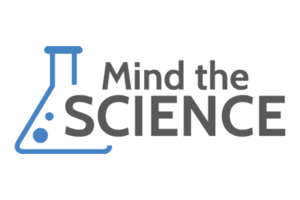Chemistry plays an essential role in the products and technologies we use every day. Innovations made possible by chemistry help enhance human health, protect the environment, save energy, and lead to cutting edge technology advancements.
However, in recent years, some chemicals in products have come under increased scrutiny. Product manufacturers, retailers and brands are facing pressure to reduce or eliminate certain chemicals in the products they make and sell. And media coverage intended to raise alarm about some specific chemicals proliferate, even when they are not fully based on science.
These misguided efforts can sometimes have unfortunate consequences, leading consumers to think that certain chemicals in the products they use are harmful.
The fact is, the mere presence of a chemical in a product does not mean harm will result. A chemical can’t simply be classified as “dangerous” or “safe;” it depends on a variety of factors, including the amount of the chemical in the product, as well as how the product is used and the extent to which users of the product may – or may not – come in contact with the chemical ingredients.
Hazard and Risk: What’s the Difference?
At the heart of responsible chemicals management are two concepts – hazard and risk. In basic terms, hazard is the potential of something to cause harm, while risk is the likelihood of harm actually occurring. To illustrate this with a simple example – a tiger can cause enormous harm to humans, but not if it is in a secure enclosure at the zoo.
Calls to eliminate a specific chemical ingredient in a product based on that chemical’s hazard profile alone may seem straightforward. But such decisions often ignore the best available science and can have unintended consequences, including potential trade-offs in quality or safety that may result from removing or substituting a chemical ingredient in a product.
Therefore, the solution isn’t necessarily to eliminate a chemical based on its hazard alone, but rather understand how to properly manage any potential risks. That’s why scientists undertake risk assessments to analyze a chemical’s inherent hazard profile, along with the exposure potential of a specific application, to help establish whether an adverse effect may result from a specific use.
Science-based Safety Information
When it comes down to it, consumers want assurance that the products they use every day are safe. The American Chemistry Council (ACC) and its member companies take concerns about chemical safety seriously. So how can consumers, retailers, and brand owners feel more confident that the products they buy, sell and use are safe?
- First, it’s important to know that chemicals sold and used in the United States are highly regulated and subject to oversight by federal agencies, such as the U.S. Environmental Protection Agency (EPA), the Food and Drug Administration (FDA) and the Consumer Product Safety Commission, among others. Any chemistry introduced or imported into the U.S. must undergo rigorous review and approval processes by government bodies, including EPA and FDA.
- ACC and its members work with product manufacturers, retailers and others along the value chain to share information about the safe, appropriate uses of chemicals and provide clear, transparent, science-based safety information about chemical ingredients in products.
- ACC members also adhere to the Responsible Care® Product Safety Code, a set of management practices outlining actions companies take to guide development of safe products and transparently share product safety information.
- In addition, to help enhance scientific understanding of chemical safety, our industry sponsors two primary scientific initiatives: the Long Range Research Initiative (LRI) promotes innovation in assessing chemical safety; while the Center for Advancing Risk Assessment Science and Policy (ARASP) helps advance knowledge about how chemicals interact with the body and the relationship between chemical exposure and safety.
ACC and its members collaborate with downstream users, retailers, manufacturers and government regulators to support the safe use of chemicals in consumer products. ACC’s website, MindTheScience.org, highlights science-based information on how some of the chemicals you may read about may be used in consumer products, the important benefits that they can provide, and safety testing and evaluations these chemicals have undergone.
Chemical safety is a shared responsibility along the value chain, and ACC will continue to make chemical safety information available and work through the supply chain to support the safe use of chemicals.
